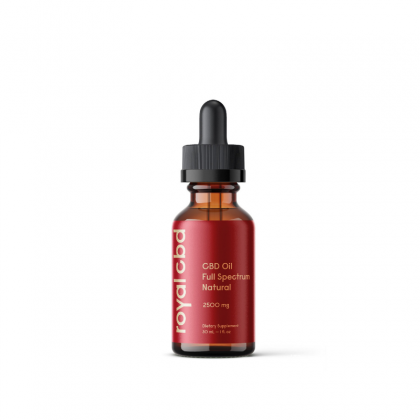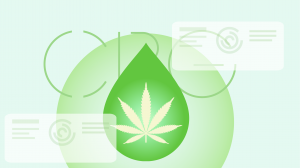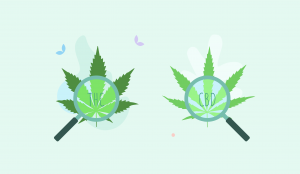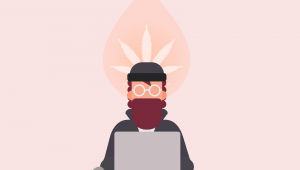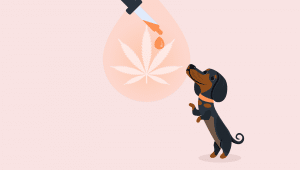| Total CBD: | 500 – 2500 mg |
| Potency: | 16.6 - 83.3 mg/mL |
| Cost per mg CBD: | $0.12 – $0.18 |
| Extract Type: | Full-spectrum |
| THC Content: | <0.3% |
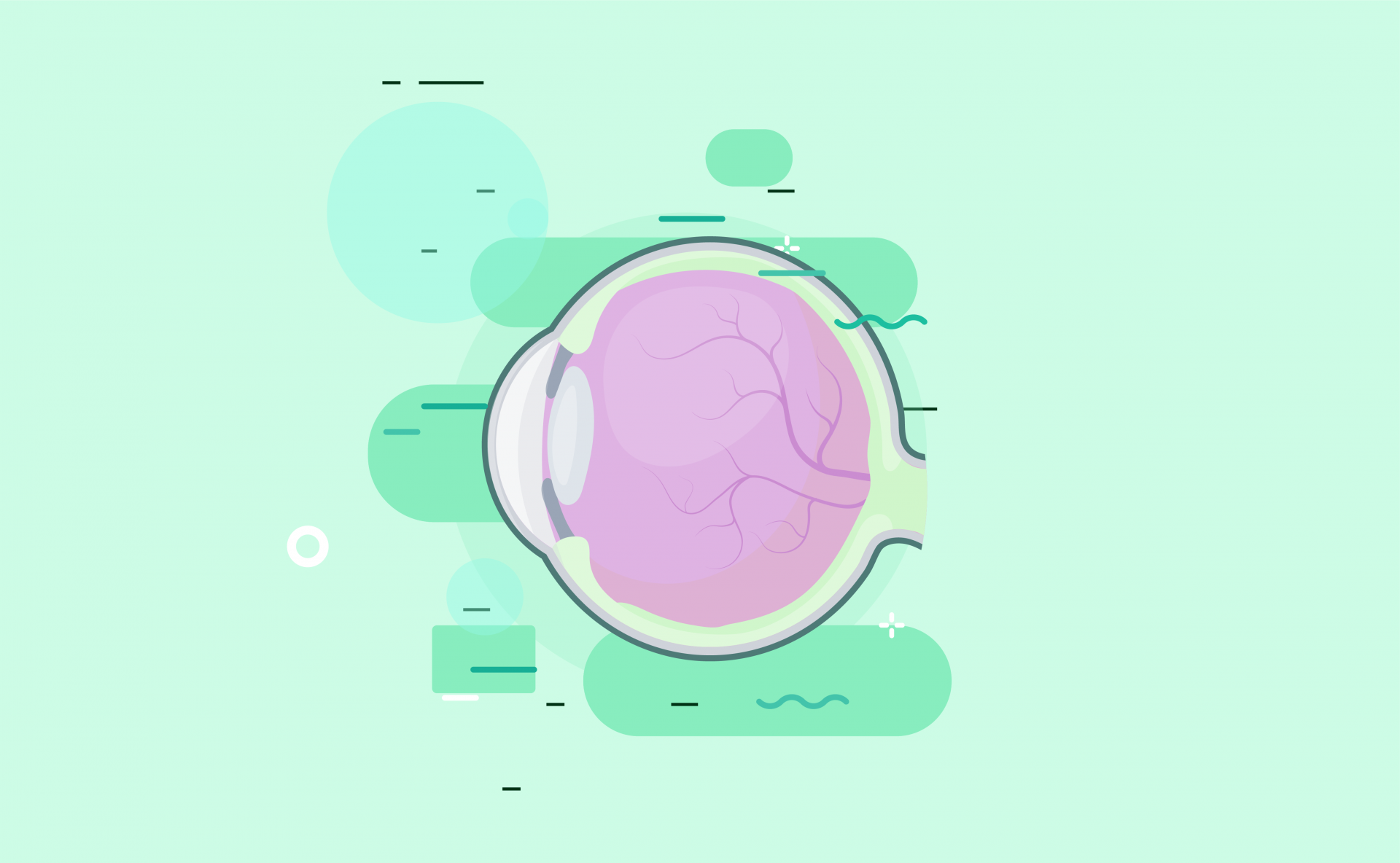
Evidence based
Cannabis & CBD For Glaucoma (Is It Effective?)
CBD itself doesn’t help with glaucoma.
However, other cannabinoids have been shown to reduce intra-ocular pressure in the eye.
Learn how people are using cannabis to alleviate glaucoma pain.
Glaucoma is the leading cause of irreversible blindness worldwide, with estimates that nearly 80 million people were diagnosed with the disease by the end of 2020 [1].
Often labeled the “sneak thief of sight,” many people are left undiagnosed — leading to permanent and irreversible vision loss [2]. It’s characterized by increased pressure in the eyeball. Reducing this pressure within the eye is the only known treatment in the disorder.
Although a lot of sources suggest CBD as a way to treat the disorder, evidence suggests otherwise.
Instead, research has indicated that inhaled cannabis, specifically THC, not CBD, may help with glaucoma by reducing pressure in the eye — however, the link is not strong and current standard treatments are still more effective than using cannabis. [3].
In this article, we discuss glaucoma and its current treatments and discuss the current research on using cannabis for glaucoma symptoms.
What Are The Benefits of Cannabinoids For Glaucoma?
People with glaucoma have used medicinal marijuana for decades to help ease symptoms.
Studies back in the 1970s found that smoking marijuana can indeed lower IOP, but it has a short duration, only lasting for three to four hours at a time.
If you have glaucoma, it’s important to maintain lower eye pressure 24 hours a day, so smoking marijuana multiple times a day is not a practical solution.
Studies have shown that THC is the molecule that lowers IOP. CBD, on the other hand, works against THC. Therefore, if you’re thinking of using cannabis oils to treat glaucoma, it’s best to use high-THC oil instead of high-CBD oil.
There is a lot of debate about this, however.
THC Has Two Key Advantages:
- It reduces intraocular pressure (IOP)
- It supports nerve health
The two major cannabinoids found in cannabis, tetrahydrocannabinol (THC) and cannabidiol (CBD), are both compounds that influence the body’s endocannabinoid system (ECS) but have very different effects.
Now, when people talk about marijuana they’re usually thinking of the effects of THC, which is the part of the cannabis plant that gives us the euphoric feelings or of being “high”.
While it also has other side effects, such as dizziness, loss of coordination, anxiety, paranoia, and increased heart rate, THC is strongly linked to reducing IOP in many studies.
1. THC Reduces Intraocular Pressure
There are many receptors for cannabinoids in the ECS. THC interacts with them, though the mechanics are still unknown. What is known is that this interaction reduces IOP while CBD, the other type of cannabinoid found in cannabis, interferes with THC activity.
It’s theorized that there is a high concentration of the CB1-type cannabinoid receptors in the eye. This is why smoking marijuana or consuming THC oils and edibles can help lower IOP.
2. THC Supports Optic Nerve Health
With glaucoma, reducing intraocular pressure isn’t always enough to prevent vision loss.
Something known as glutamate-induced neurotoxicity also appears to play a significant role in glaucoma.
Sufferers tend to have an elevated level of glutamate – the major neurotransmitter found in the eye – the excess glutamate accumulates in the retinal ganglion cells and damages neurons.
New research has found that CBD and THC can protect against this glutamate-induced cell death since they are both antioxidants.
What CBD Can Help With: Glaucoma Risk Factors
While CBD may not help with glaucoma directly, it can help with other issues that may aggravate existing IOP issues. Let’s take a look at them:
1. CBD & High Blood Pressure
CBD oil has been shown to reduce blood pressure and manage stress due to its ability to increase blood flow during times of stress [10].
CBD acts as a vasodilator — it allows the blood to flow more freely by relaxing the smooth muscle cells within blood vessels and taking away pressure placed on the arteries.
2. CBD & Diabetes
Diabetes is a major cause of two specific types of glaucoma known as open-angle glaucoma (the most common form of the disease), and neovascular glaucoma.
There are several theories as to why this happens — including such processes as inflammation in the eye, retinal cell death from high blood sugar levels, and the development of dysfunctional blood vessels in the eye.
Chronic inflammation due to insulin resistance is a key factor in developing type 2 diabetes. Researchers have found that the anti-inflammatory properties of CBD treat this inflammation, thus improving the body’s metabolism and glycemic control [11].
What does this
mean?
CBD can reduce inflammation that leads
to developing type 2 diabetes, which may reduce the chances of diabetic-induced
glaucomas.
3. CBD & Inflammation
Cannabinoids have been shown to be anti-inflammatory and immunosuppressive agents — largely due to their interactions with the ECS.
They do this by inhibiting cell proliferation, and suppressing inflammatory cytokines [12].
What does this mean?
Simply put, CBD can reduce inflammation and influence certain immune cells.
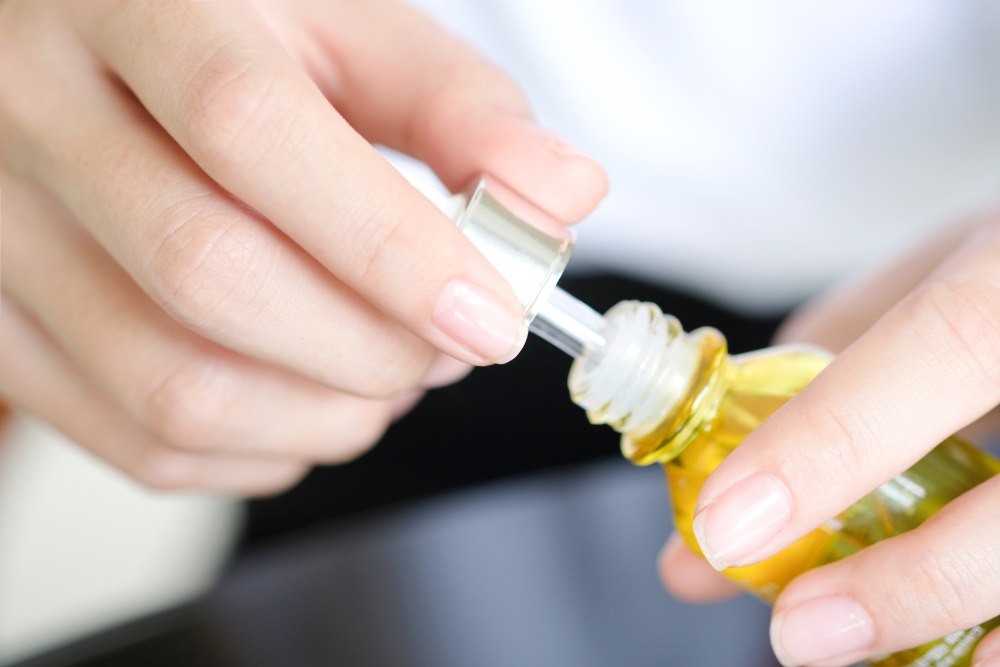
Can CBD Oil Help With Glaucoma?
When using cannabis for glaucoma, there are three main things to remember:
- Oils high in CBD are not recommended if you have glaucoma — THC is the only cannabinoid backed by research to be a potential treatment for glaucoma
- Always follow the advice of a medical practitioner — be open about your interest in trying cannabis products to support your symptoms
- When it comes to dosing, the key is to start low and go slow
There are different methods for treating glaucoma with cannabis. You can try topical eye drops or take in the form of oral drops, pastes, capsules, or in tea or lozenges. Concentrations vary greatly between products and how it is prepared.
As we are all different, the dosage will vary with each individual. We recommend starting with a small dose, such as 10 mg of extract per day, and see how you react.
As everyone responds to cannabis differently it may take some trial and error to get the right dose for you.
Keep a daily journal of dosages, timings and any symptoms. This will help you to find your personal optimal dose.
It’s important to note that higher doses (>40 mg) of CBD increase IOP. So it is extremely important to read the label of the product you are using.
Use cannabis oils, do not smoke marijuana. Smoking marijuana long-term is not recommended as a treatment for glaucoma due to its short duration of action and risk of lung damage over time.
Is Cannabis Oil Safe?
You can’t overdose on CBD.
However, quality counts.
According to the World Health Organisation (WHO) CBD oil, in its pure state, does not cause harm or have the potential for abuse even at high doses [13].
The research we have discussed here is based on using high-quality CBD. It’s important you make sure you use a high-quality CBD product that is free from contaminants and artificial additives.
CBD oils may have some side effects — especially if you’re using a CBD oil that also has THC inside (recommended for glaucoma).
The main side-effects of CBD and THC supplements include:
- Paranoia
- Dizziness
- Anxiety
- Fatigue
- Headaches
- Low blood pressure
What is Glaucoma?
The name glaucoma belongs to a group of eye diseases that damage the optic nerve in the back of the eye. It tends to worsen gradually over time.
Most commonly, this is due to increased pressure inside the eye — known as intraocular pressure (IOP).
The front of the eye produces what is known as the ‘aqueous humor’, a fluid that is continuously drained from the eye. If this fluid doesn’t circulate out of the eye properly, it builds up — causing increased pressure within the eyeball.
Glaucoma may also be caused by poor blood supply to the optic nerve fibers or a weakness in the nerve structure of the eye [4].
There Are Two Types of Glaucoma
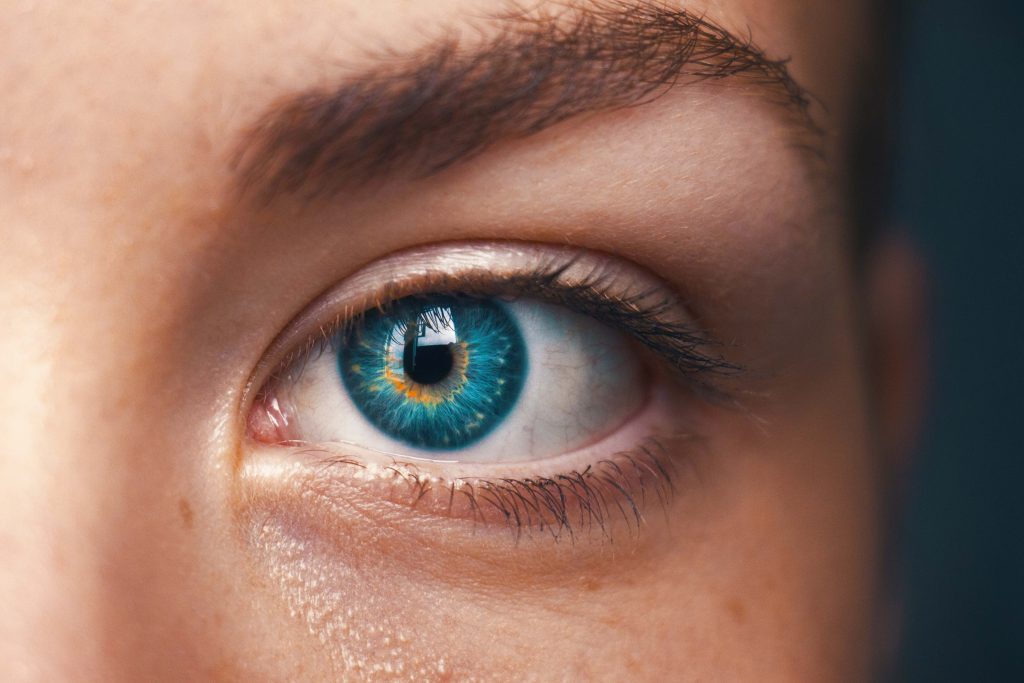
1. Open-Angle Glaucoma
Open-angle glaucoma (OAG) is the most common type of glaucoma, accounting for at least 90% of all glaucoma cases [5].
OAG happens when the aqueous humor (the clear liquid that lubricates and nourishes the inside of the front of the eye) becomes blocked and doesn’t drain properly. This causes pressure to rise in the eye, eventually damaging the optic nerve.
Often there are no warning signs, with loss of vision occurring gradually over several years without pain or discomfort.
With early detection, you can treat and slow down the condition.
2. Angle-Closure Glaucoma
Angle-closure glaucoma (ACG) is different from OAG in that the eye pressure can rise rapidly. It’s a rare form of the disorder.
ACG happens when the peripheral part of the iris — the colored part of the eye — becomes blocked over the drainage canals. The pupil will enlarge too much or too quickly.
Symptoms of Glaucoma
- Blurry vision
- Seeing “halos” in the eyes under bright lights
- Headaches
- Nausea
- Vomiting
Not all patients with glaucoma will have elevated intraocular pressure, but what’s been found is that for every mmHg(a measurement of pressure) that intraocular pressure is lowered, it reduces the risk of the disorder by 10% [6].
Anyone can get glaucoma, however, some people are more at risk than others.
Risk Factors for Glaucoma
- Family history of glaucoma
- Diabetes
- Aged 40 years and over
- Previous injuries to the eye
- Hypertension
- High eye pressure
- Myopic or “near-sighted”
If you experience any of the following symptoms you should see your eye specialist as soon as possible.
- Vision loss
- Halos in bright lights
- Redness in the eye
- Eye pain
- Blurred vision
- Nausea and vomiting
It’s important to note that symptoms can vary greatly between individuals, you may have some or none of the symptoms mentioned.
This is why it is important to have regular visits with your eye specialist to ensure the condition is detected in its early stages.
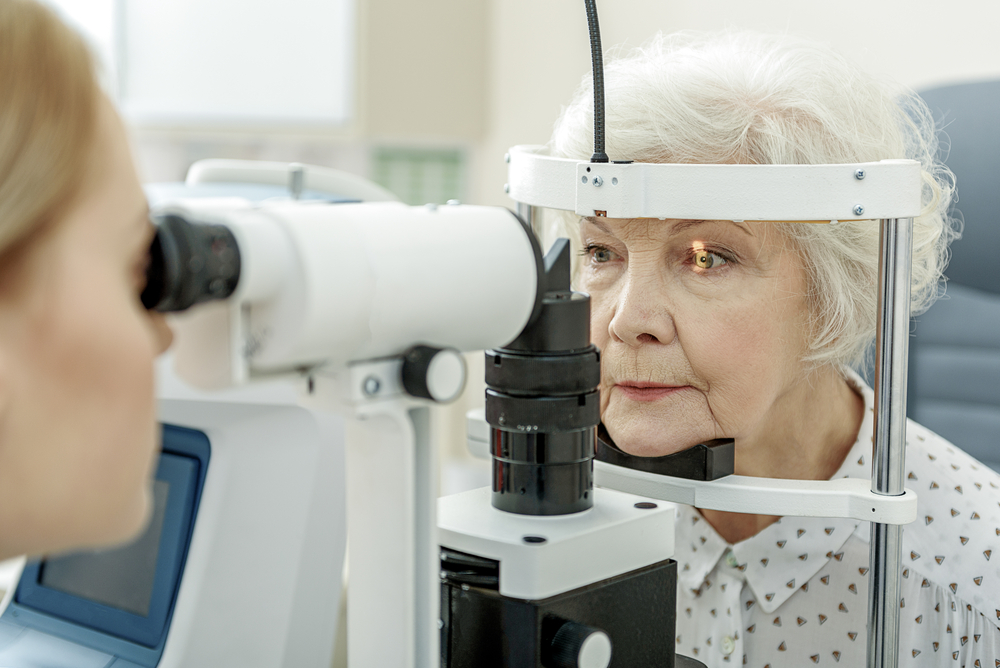
How is Glaucoma Diagnosed?
As glaucoma initially causes peripheral vision loss (side vision) undetectable to the patient, regular eye check-ups — especially after the age of 40 — are essential to screen for glaucoma, assessing if further examination is needed.
A Glaucoma Test Usually Includes the Following:
- Optic nerve check with an ophthalmoscope
- Eye pressure check (tonometry)
- Visual field assessment if needed — this tests the sensitivity of the peripheral vision, where glaucoma initially starts.
Conventional Treatments for Glaucoma
Most treatments for open-angle glaucoma are aimed at lowering and controlling eye pressure or decreasing the production of fluid in the eye. The most common treatment is specialized eye drops — an ophthalmologist decides on which treatment to use or a combination of therapies.
1. Eye Drops
These are the most common initial forms of treatment and are classified by their active chemical ingredient. These include prostaglandins, beta-blockers, alpha agonists, and rho kinase inhibitors. Certain drugs should not be used with CBD, so always speak to your doctor first if you’re using any medications (prescription and over-the-counter.)
Common Side Effects of Eye Drops:
- Eye drops that contain prostaglandins can cause stinging, burning, and eye color change.
- Beta-blocker medications used in a variety of glaucoma eye drops can cause reduced heart rate and adverse side effects in individuals with heart and lung problems such as emphysema, diabetes, and depression.
- Alpha agonist-based eye drops can cause burning, stinging, fatigue, headache, and drowsiness.
2. Oral Medications
Medications such as Carbonic Anhydrase Inhibitors (CAIs) can be used in conjunction with eye drops.
CAIs can cause systemic side effects such as transient myopia (short-sightedness), frequent urination, tingling of the extremities, and lightheadedness.
3. Selective Laser Trabeculoplasty (SLT)
Laser treatments are performed if eye drops have failed to control deterioration in vision. The effects of laser treatment are often not permanent, and many patients will need to return to medications.
Side Effects of Selective Laser Trabeculoplasty (SLT) May Include:
- Mild side effects include soreness, redness, and blurring of vision.
- Elevated Eye Pressure — In some cases the eye pressure can increase after the procedure. This increase in eye pressure is usually temporary and may be treated with additional eye drops or oral medications. Very rarely this increase in eye pressure can persist and require more invasive surgical procedures to be performed.
- Peripheral Anterior Synechiae — adhesion of the iris to the cornea.
- Inflammation & Swelling — In rare cases, selective laser trabeculoplasty (SLT) can lead to persistent inflammation within the eye. This is a potentially serious complication that can lead to other problems in the eye.
4. Surgery (Trabeculectomy)
Surgery is performed if eye drops, medications or laser has failed to control the pressure in the eye. Surgery can be effective, however, there are risks involved.
Side Effects of Surgery Include:
- Postoperative infection
- Drooping eyelid
- Double vision
- Swelling
- Bleeding
- Developing a hole near the operation site
- Scarring
- Low IOP (hypotony)
In severe cases, some people experience:
- Hemorrhaging inside the affected eye
- Choroidal detachment
- Vision loss
- Loss of the eye itself
If treated and monitored, glaucoma will usually not lead to blindness. Only about 5% of patients with glaucoma experience vision loss. While it isn’t a condition that can be cured, there are many options available to maintain IOP at normal levels. These options include medication, laser, and surgery.

Final Verdict: Using Cannabis for Glaucoma
Most of the research up until this point shows that THC is effective in reducing IOP, while CBD interferes with THC activity.
For the small percentage of people who suffer continued vision loss even after controlling their IOP, THC is an antioxidant that can help prevent retinal ganglion cell apoptosis.
Unfortunately, since CBD does not relieve IOP, one would need to find an oil that is high in THC and avoid CBD specific oils.
Of course, you should also continue with the medication schedule ordered by your ophthalmologist. To prevent any drug interactions, always check with your doctor before beginning any supplemental treatment.
References
- Tham, Y. C., Li, X., Wong, T. Y., Quigley, H. A., Aung, T., & Cheng, C. Y. (2014, November 1). Global prevalence of glaucoma and projections of glaucoma burden through 2040: A systematic review and meta-analysis. Ophthalmology. Elsevier. https://doi.org/10.1016/j.ophtha.2014.05.013
- Glaucoma Treatment, Symptoms & Diagnosis. (n.d.). Retrieved December 12, 2018, from https://www.lei.org.au/services/eye-health-information/glaucoma/
- Lederer C. M. (2012). The use of marijuana to treat glaucoma. Missouri medicine, 109(2), 95. Retrieved August 22, 2019, from https://www.ncbi.nlm.nih.gov/pmc/articles/PMC6181747/
- Weinreb, R. N., Aung, T., & Medeiros, F. A. (2014). The pathophysiology and treatment of glaucoma: a review. JAMA, 311(18), 1901–1911. doi:10.1001/jama.2014.3192
- Types of Glaucoma | Glaucoma Research Foundation. (n.d.). Retrieved December 13, 2018, from https://www.glaucoma.org/glaucoma/types-of-glaucoma.php
- Cairns, E. A., Baldridge, W. H., & Kelly, M. E. M. (2016, January 12). The Endocannabinoid System as a Therapeutic Target in Glaucoma. Neural Plasticity. Hindawi. https://doi.org/10.1155/2016/9364091
- Tomida, I., Pertwee, R. G., & Azuara-Blanco, A. (2004). Cannabinoids and glaucoma. The British journal of ophthalmology, 88(5), 708–713. doi:10.1136/bjo.2003.032250
- Philpott, H. T., OʼBrien, M., & McDougall, J. J. (2017). Attenuation of early phase inflammation by cannabidiol prevents pain and nerve damage in rat osteoarthritis. Pain, 158(12), 2442–2451. doi:10.1097/j.pain.0000000000001052
- Kokona, D., Georgiou, P.-C., Kounenakis, M., Kiagiadaki, F., & Thermos, K. (2016). Endogenous and Synthetic Cannabinoids as Therapeutics in Retinal Disease. Neural Plasticity, 2016, 8373020. https://doi.org/10.1155/2016/8373020
- Jadoon, K. A., Tan, G. D., & O’Sullivan, S. E. (2017). A single dose of cannabidiol reduces blood pressure in healthy volunteers in a randomized crossover study. JCI Insight, 2(12). https://doi.org/10.1172/jci.insight.93760
- Horváth, B., Mukhopadhyay, P., Haskó, G., & Pacher, P. (2012). The endocannabinoid system and plant-derived cannabinoids in diabetes and diabetic complications. The American Journal of Pathology, 180(2), 432–42. https://doi.org/10.1016/j.ajpath.2011.11.003
- Mecha, M., Feliú, A., Iñigo, P. M., Mestre, L., Carrillo-Salinas, F. J., & Guaza, C. (2013). Cannabidiol provides long-lasting protection against the deleterious effects of inflammation in a viral model of multiple sclerosis: A role for A2A receptors. Neurobiology of Disease, 59, 141–150. https://doi.org/10.1016/j.nbd.2013.06.016
- World Health Organization. (2017). WHO | Cannabidiol (compound of cannabis). WHO. Retrieved from http://www.who.int/features/qa/cannabidiol/en/
More Health Conditions to Explore
-
Conditions Related to Health Benefits
- CBD For Allergies: Can This Cannabinoid Ease Symptoms?
- Top 10 CBD Oils For Back Pain
- Can CBD Help With Menstrual Cramps?
- CBD for Sciatica: How It Works, Safety, Drug Interactions, & Best Products
- Is CBD a Viable Treatment for Cerebral Palsy?
- CBD Oil For Sleep
- CBD For Psoriasis: Can CBD Help to Alleviate Symptoms?
- Traumatic Brain Injury (TBI)
- Arthritis
- Anxiety & Depression
- Weight Loss
- ADD & ADHD
- Anorexia
- Alzheimer’s Disease & Dementia
- Addiction
- ALS (Amyotrophic Lateral Sclerosis)
- Antibiotic Resistance
- Asthma
- Atherosclerosis
- Autism
- Acne
- Bipolar Disorder
- Pain
- Crohn's Disease & Ulcerative Colitis
- Diabetes
- Epilepsy
- Endocrine Disorders
- Fibromyalgia
- Fatty Liver Disease
- Glaucoma
- Hypertension
- Heart Disease
- Huntington's Disease
- Inflammation
- Irritable Bowel Syndrome (IBS)
- Kidney Disease
- Migraine Headaches
- Muscle Recovery
- Multiple Sclerosis
- Motion Sickness
- Metabolic Syndrome
- Neurodegeneration
- Cancer
- Nausea
- Neuropathic (Nerve) Pain
- Osteoporosis/Bone Health
- Obsessive-Compulsive Disorder (OCD)
- Polycystic Ovarian Syndrome (PCOS)
- PTSD
- Prion/Mad Cow Disease
- Premenstrual Syndrome (PMS)
- Parkinson’s Disease
- Schizophrenia
- Sickle Cell Anemia
- Stroke
-
Conditions Related to Products
- Ranking The Top 13 THC Gummies By Category (Δ8, Δ9, Δ10, HHC, & More)
- Top 10 CBD Oils For Back Pain
- Everything You Need to Know About CBD Sunscreen
- Top 7 CBD Gummies For Sleep & Insomnia
- Top 7 CBD Gummies To Help With Anxiety (2022)
- Best CBD Gummies For Pain (Top-Rated Pain Gummies For 2022)
- Best Hemp Cigarettes (Top 5 Nicotine-Free Smokes)
- Top 5 CBD Lip Balms For 2022
- The Top 7 CBD Face Masks for 2022
- The Best CBD Inhalers For 2022 (& How to Use Them)
- Best Full-Spectrum CBD Vape Juice: What to Look For & How to Use It
- CBD Eye Drops: New Option For Glaucoma?
- CBD Oil For Dogs With Arthritis
- Best CBD Massage Oils In 2022
- Buyer's Guide To The Best CBD Vape Kits In 2022
- CBD Chocolate: Yes, It Exists & It's Just as Divine as it Sounds
- CBD Pre-Rolls & Cigarettes
- Terpene Concentrates
- Best CBD Soaps
- Best CBD Shampoo & Conditioner
- Best CBD Juul Pods
- CBD Isolate Oils
- Full-Spectrum CBD Oils
- Best CBD Lube
- CBD Honey
- CBD Transdermal Patches
- Best Dry Herb Vaporizers
- CBD Oil For Dogs With Epilepsy
- CBD Oil For Dogs With Anxiety
- CBD Oil For Dogs With Cancer
- CBD For Horses
- CBD Chewing Gum
- CBD Pain Cream
- CBD Oil For Cats
- CBD Oil For Dogs
- CBD Hemp Flower
- CBD Suppositories
- Best CBD Gummies for Pain, Sleep & Anxiety Reviewed (2022)
- CBD Teas
- CBD Vape Pens
- CBD Vape Oils
- CBD Coffee
- CBD Drinks & Shots
- CBD Crystals
- CBD Skincare
- Best CBD Oil & Gummies For Kids: Is CBD Safe for Children with Anxiety & ADHD?
- CBD Concentrates
- CBD Bath Bombs
- CBD Capsules
- CBD Sprays
- CBD Dog Treats
-
Conditions Related to Topicals
-
Conditions Related to Oils & Tinctures
-
Conditions Related to Edibles
- Top 7 CBD Gummies To Help With Anxiety (2022)
- Best CBD Gummies For Pain (Top-Rated Pain Gummies For 2022)
- CBD Chocolate: Yes, It Exists & It's Just as Divine as it Sounds
- CBD Honey
- CBD Chewing Gum
- Best CBD Gummies for Pain, Sleep & Anxiety Reviewed (2022)
- CBD Teas
- CBD Coffee
- CBD Drinks & Shots
- CBD Capsules
-
Conditions Related to Gummies
- Ranking The Top 13 THC Gummies By Category (Δ8, Δ9, Δ10, HHC, & More)
- Top 7 CBD Gummies For Sleep & Insomnia
- Top 7 CBD Gummies To Help With Anxiety (2022)
- Best CBD Gummies For Pain (Top-Rated Pain Gummies For 2022)
- Best CBD Gummies for Pain, Sleep & Anxiety Reviewed (2022)
- Best CBD Oil & Gummies For Kids: Is CBD Safe for Children with Anxiety & ADHD?
-
Conditions Related to Hemp Flower
-
-
Conditions Related to Terpenes
-
-
Conditions Related to Cultivation
-
Conditions Related to Concentrates
-
Conditions Related to Delta 8 THC
-
Conditions Related to Delta 9 THC
-
-
-
-
Conditions Related to CBD
- Everything You Need to Know About CBD Sunscreen
- Top 7 CBD Gummies For Sleep & Insomnia
- Top 7 CBD Gummies To Help With Anxiety (2022)
- Best CBD Gummies For Pain (Top-Rated Pain Gummies For 2022)
- Best Hemp Cigarettes (Top 5 Nicotine-Free Smokes)
- Top 5 CBD Lip Balms For 2022
- The Top 7 CBD Face Masks for 2022
- The Best CBD Inhalers For 2022 (& How to Use Them)
- Best Full-Spectrum CBD Vape Juice: What to Look For & How to Use It
- CBD Eye Drops: New Option For Glaucoma?
- CBD Oil For Dogs With Arthritis
- Best CBD Massage Oils In 2022
- Buyer's Guide To The Best CBD Vape Kits In 2022
- CBD Chocolate: Yes, It Exists & It's Just as Divine as it Sounds
- CBD Pre-Rolls & Cigarettes
- Best CBD Soaps
- Best CBD Shampoo & Conditioner
- Best CBD Juul Pods
- CBD Isolate Oils
- Full-Spectrum CBD Oils
- Best CBD Lube
- CBD Honey
- CBD Transdermal Patches
- CBD Oil For Dogs With Epilepsy
- CBD Oil For Dogs With Anxiety
- CBD Oil For Dogs With Cancer
- CBD For Horses
- CBD Chewing Gum
- CBD Pain Cream
- CBD Oil For Cats
- CBD Oil For Dogs
- CBD Hemp Flower
- CBD Suppositories
- Best CBD Gummies for Pain, Sleep & Anxiety Reviewed (2022)
- CBD Teas
- CBD Vape Pens
- CBD Vape Oils
- CBD Coffee
- CBD Drinks & Shots
- CBD Crystals
- CBD Skincare
- Best CBD Oil & Gummies For Kids: Is CBD Safe for Children with Anxiety & ADHD?
- CBD Concentrates
- CBD Bath Bombs
- CBD Capsules
- CBD Sprays
- CBD Dog Treats
-
-
Conditions Related to THC-O
-
-
Conditions Related to Joint Health
-
Conditions Related to Pain Disorders
- Top 10 CBD Oils For Back Pain
- Can CBD Help With Menstrual Cramps?
- CBD for Sciatica: How It Works, Safety, Drug Interactions, & Best Products
- Traumatic Brain Injury (TBI)
- Arthritis
- Pain
- Fibromyalgia
- Glaucoma
- Inflammation
- Kidney Disease
- Migraine Headaches
- Multiple Sclerosis
- Neuropathic (Nerve) Pain
- Premenstrual Syndrome (PMS)
- Sickle Cell Anemia
-
Conditions Related to Autoimmune Disease
-
Conditions Related to Cognitive Health
-
Conditions Related to Metabolic Disorders
-
Conditions Related to Psychological Disorders
-
Conditions Related to Muscles & Bones
-
Conditions Related to Nervous System
- CBD for Sciatica: How It Works, Safety, Drug Interactions, & Best Products
- Is CBD a Viable Treatment for Cerebral Palsy?
- CBD Oil For Sleep
- Traumatic Brain Injury (TBI)
- Anxiety & Depression
- ADD & ADHD
- Anorexia
- Alzheimer’s Disease & Dementia
- Addiction
- ALS (Amyotrophic Lateral Sclerosis)
- Autism
- Bipolar Disorder
- Epilepsy
- Huntington's Disease
- Inflammation
- Migraine Headaches
- Multiple Sclerosis
- Motion Sickness
- Neurodegeneration
- Neuropathic (Nerve) Pain
- Obsessive-Compulsive Disorder (OCD)
- PTSD
- Prion/Mad Cow Disease
- Parkinson’s Disease
- Schizophrenia
-
-
Conditions Related to Reproductive Health
-
Conditions Related to Hormones & Endocrine
-
Conditions Related to Skin Health
-
Conditions Related to Cardiovascular System
-
Conditions Related to Digestive System
-
Conditions Related to Genetic Disorders
-
Conditions Related to For Children


